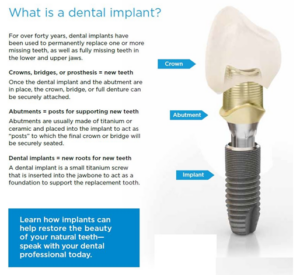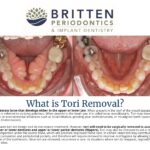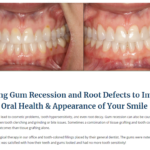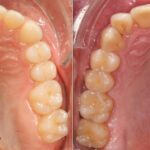Headaches, neck pain, and frequent jaw tenderness or popping are signs you may be suffering from a TMJ condition.
What is the difference betweenTMJ and TMD?
The TMJ, or temporomandibular joints, are the two joints on each side of the face that connect the jaw to the temporal bone of the skull. Each temporomandibular joint has a disc located between a ball and socket. The disc provides padding for chewing forces while enabling the jaw to open wide and glide and even rotate. The TMJ work together during chewing, speaking and swallowing. They control the lower jaw (mandible) as it moves forward, backward and side to side. When the TMJ is not functioning properly, it is known as TMD. TMD is a disorder which includes any problem that prevents the joints, jaw muscles, ligaments or jaw bone that work to open and close your mouth from working properly.
A disruption in this complex system of muscles, ligaments, discs and bones from may result in a painful TMJ disorder. TMJ disorders (or TMD) can be caused by arthritis, jaw dislocation or injury, tooth and jaw alignment or can be complications due to muscle tension stress and tooth grinding. During a TMJ exam, your dentist will evaluate the joints and muscles for tenderness, clicking, popping, creaking and discomfort . Depending on the severity and cause of any irregularities, the dentist may refer you to a physician or another dental specialist. There are many options for treatment of TMJ, ranging from very conservative treatments to more invasive surgeries. According to the American Dental Association, the “National Institute of Dental and Craniofacial Research recommends a “less is often best” approach in treating TMJ disorders”.
Treatments for TMD include:
– a soft diet (avoiding chewing gum or nail biting)
-simple pain care such as warm compresses, over the counter anti-inflammatory medications (Nsaids, ibuprofen)
– Relaxation techniques for jaw tension , such as help for stress reduction, meditation or biofeedback.
-physical therapy for jaw exercises or jaw massage. Physical therapy may also include transcutaneous electrical nerve stimulator (TENS) to use low-level electrical currents to relax joint and facial muscles and provide relief or laser therapy.
-prescription medications for muscle relaxers, pain relief, or anti-anxiety medications,
– a night guard or bite splint to decrease clenching or grinding of teeth.
– sometimes an evaluation and adjustment of a person’s bite by their dentist can help.
-orthodontic treatment may be recommended to change jaw and teeth alignment for a more favorable position for TMJ health.
In extreme cases, surgical intervention may be advisable for TMD treatment. While other joints in our bodies can be treated by complete rest or isolation with a cast or splint… this is not easy with our jaw! Eating and speaking are so important in daily life! For those suffering from TMD, relief begins with a proper diagnosis, understanding of the underlying causes and often trying the more conservative methods first before considering surgical intervention.
If you feel you may be suffering from TMD, contact us today for more information. 727-586-2681







